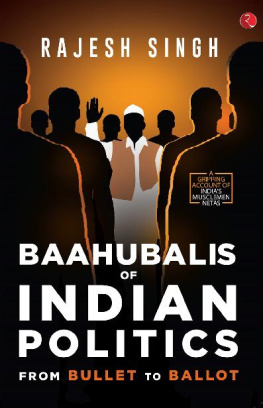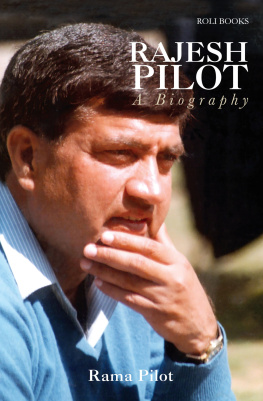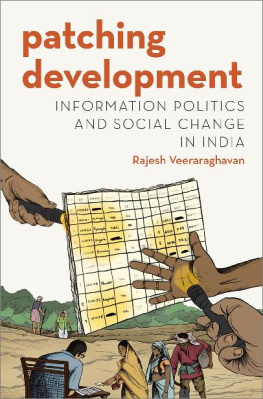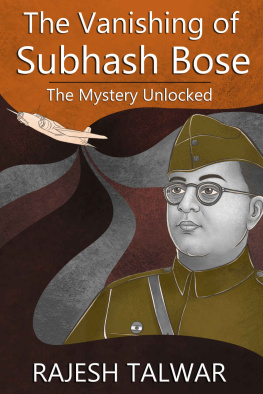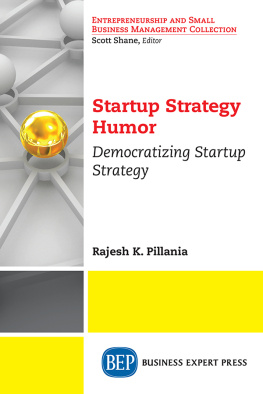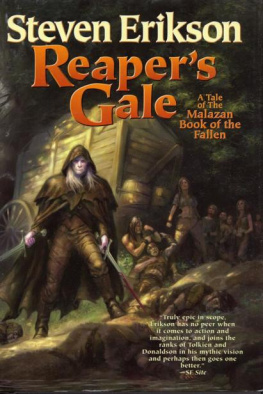Kushagra Rajesh Sengar - The Erotic Carvings of Khajuraho
Here you can read online Kushagra Rajesh Sengar - The Erotic Carvings of Khajuraho full text of the book (entire story) in english for free. Download pdf and epub, get meaning, cover and reviews about this ebook. year: 2015, publisher: -, genre: Science. Description of the work, (preface) as well as reviews are available. Best literature library LitArk.com created for fans of good reading and offers a wide selection of genres:
Romance novel
Science fiction
Adventure
Detective
Science
History
Home and family
Prose
Art
Politics
Computer
Non-fiction
Religion
Business
Children
Humor
Choose a favorite category and find really read worthwhile books. Enjoy immersion in the world of imagination, feel the emotions of the characters or learn something new for yourself, make an fascinating discovery.

- Book:The Erotic Carvings of Khajuraho
- Author:
- Publisher:-
- Genre:
- Year:2015
- Rating:3 / 5
- Favourites:Add to favourites
- Your mark:
- 60
- 1
- 2
- 3
- 4
- 5
The Erotic Carvings of Khajuraho: summary, description and annotation
We offer to read an annotation, description, summary or preface (depends on what the author of the book "The Erotic Carvings of Khajuraho" wrote himself). If you haven't found the necessary information about the book — write in the comments, we will try to find it.
The Erotic Carvings of Khajuraho — read online for free the complete book (whole text) full work
Below is the text of the book, divided by pages. System saving the place of the last page read, allows you to conveniently read the book "The Erotic Carvings of Khajuraho" online for free, without having to search again every time where you left off. Put a bookmark, and you can go to the page where you finished reading at any time.
Font size:
Interval:
Bookmark:
THE
EROTIC
CARVINGS
OF
KHAJURAHO
By
KUSHAGRA RAJESH SENGAR
@ 2105 by Kushagra Rajesh Sengar All rights reserved.
No part of this book may be reproduced in any written, electronic, recording, or photocopying without written permission of the publisher or author. The exception would be in the case of brief quotations embodied in the critical articles or reviews and pages where permission is specifically granted by the publisher or author. Although every precaution has been taken to verify the accuracy of the information contained herein, the author and publisher assume no responsibility for any errors or omissions. No liability is assumed for damages that may result from the use of information contained within.
The author can be contacted at
ACKNOWLEDGEMENT
It gives me immense pleasure to present this book before the reader. I feel that I must first make a clean breast of my gratitude towards the people who have been instrumental in making this endeavour successful.
My deep gratitude is due to, Pawan Kumar Pandey. Not only a close friend and critic, but also my source of inspiration, I must also thank him for editing and making this work presentable.
Also, I owe much to my friends: Kunal Chaturvedi, Praveen Kumar Singh, Chandan Giri, Vijyant Singh, and Prateek Agarwal for their constant support and motivation.
At last, let me express my gratitude for my mother, whose blessings have always kept me in good stead, as well as my wife for bearing with me during those long hours of writing.
INTRODUCTION
The erotic art of Khajuraho has been a subject of great interest, ever since its discovery by the British engineer T.S Burt in the late 19th century. Even after years of speculation now, erotic art of Khajuraho remains a mystery.
In presenting this work to the reader, the intention of the author has been to provide a crisp account, of the sphinxian mystery of erotic temple art of Khajuraho. A lot has already been written on the subject, but since this is a highly academic subject, the available academic writings may not appeal much to the laymen who might be interested in the subject.
This work is produced, strictly, keeping in view the interest of such people, and effort has been made to provide, as far as possible, a condensed account of the major opinions and theories that exist on this subject, in a lucid style.
In the present work, we intend to lay down a body of principles, arguments, beliefs, and shreds of myths surrounding the erotic art of Khajuraho, and in the process attempt to answer the questions that have for long tickled the imagination of the world.
The cut and thrust of our focus, however, would be confined to the understanding of erotic art alone. We shall not venture in to other aspects of these temples such as architectural plan, religious, political, or mythological influences on them etc. These elements might feature in this work only in places where their omission might present a hindrance in the path of our proposed enquiry.
We also endeavor to present in the outline various theories that have cropped up, as a direct consequence, of the attempts made to understand these erotic carvings. In the light of these theories, the reader would be able to obtain a primary acquaintance with the framework of general principles that may enable him to build an understanding about these carvings, and might as well give him a peek in to the mind of the artisan, who executed them with exceptional skill.
Anyone scarcely acquainted with the mainstream Hindu thought of our day might find the idea of having erotic carvings in a temple, offensive even antithetical, to the core spiritual principles laid down in the scriptures of Hinduism. But, the truth is far more complex than a common follower of the religion could ever come to understand.
Most temples that were commissioned during the period in question have these erotic themes as a quintessential part of their architectural plan. Was this an anomaly? We know not. Nevertheless, the paradox arising from these carvings dilutes and subsequently dissolves, when we turn our attention to the literature written down during the time of erection of these temples, especially the treatises dealing with Tantra.
It is in these ancient texts that the first clues would appear, which when followed meticulously, afford us a change to understand these carvings in a systematic manner, at least to some extent.
Therefore we have sketched a brief account of the Tantra philosophy for the reader, so as to acquaint him with its elements that inspired and thus contributed to the art of Khajuraho. Also, other important literary works bearing some connection, direct or indirect, with the erotic art of Khajuraho have found a brief representation in this work, though their comprehensive account is certainly beyond the scope of this work.
In the pursuit of subtle significance of these carvings, we must not ignore the grandeur and the visible beauty of the art. For, the primary attraction of Khajuraho remains the elegance and the finesse with which the artisan has entered upon his carvings, instantly imparting to them a sense of vivid movement, an underlying animation, as if a soul is present in the stone.
To pay homage to the extraordinary skill of the artisan, we have devoted one complete chapter to the carvings of Khajuraho; the chapter deals with the various kinds of carvings to be found on the walls of these temples and also briefly discusses them in the context of the Silpa Sastra. The account, however, is by no means exhaustive as it only covers them in the outline and do not dwell on them any further.
No art form must be viewed in isolation, therefore it was important to discuss the life of the times when the temples were erected. It is important to note the significant changes that came in the social, political and religious life of India between 5 century B.C and 5 century A.D, and the subsequent impact that they had on the later era, when erotic art first made its appearance. We have discussed these changes and through that established the logic as to why this art gained more prominence in the middle ages, though it was always present in the sub terrain of our society.
In the end, it must be impressed upon the reader that the author claims no scholarship as regards art history, archaeology, or interpretation of erotic art. The present work is merely a collation of various arguments, beliefs, and theories in the light of which the author has attempted to set forth a system of understanding that would be useful to a common reader. In doing so, the author has obviously drawn much from the suggestions of various scholars, mentioned herein, quite often but not without blending them with his own more frequently
Khajuraho: A historiography
The temple complex of Khajuraho was built by the Chandela rulers between 950 AD and 1050 AD. They are situated 620 km south-east of New Delhi in the Indian province of Madhya Pradesh. The temples are located in a small town called Khajuraho, 50 km from chattarpur city. The Chandelas ruled from their political capital Kalinjar, while Khajuraho was the cultural capital of the empire.
It is said that initially there were 85 temples of which now but only 25 remain in well- preserved condition. The temple complex is scattered over an area of about 20 sq. Km. It is believed that in its heyday the complex was surrounded by a wall with eight gates; all flanked by two golden palm trees. The name Khajuraho is said to have been derived from (Khajur: date tree), the region surrounding the temples still abound in Khajur trees.
The complex is surrounded by a thick forest cover from all sides, making it almost treacherous to be reached by a stranger. This site was perhaps chosen on purpose to save the temples from the eye of barbarous invaders who frequently raided the country during the period in question. Also perhaps this city of temples was used as an academic center of learning for the young brahmacharis and therefore was built in isolation of a jungle.
Font size:
Interval:
Bookmark:
Similar books «The Erotic Carvings of Khajuraho»
Look at similar books to The Erotic Carvings of Khajuraho. We have selected literature similar in name and meaning in the hope of providing readers with more options to find new, interesting, not yet read works.
Discussion, reviews of the book The Erotic Carvings of Khajuraho and just readers' own opinions. Leave your comments, write what you think about the work, its meaning or the main characters. Specify what exactly you liked and what you didn't like, and why you think so.

